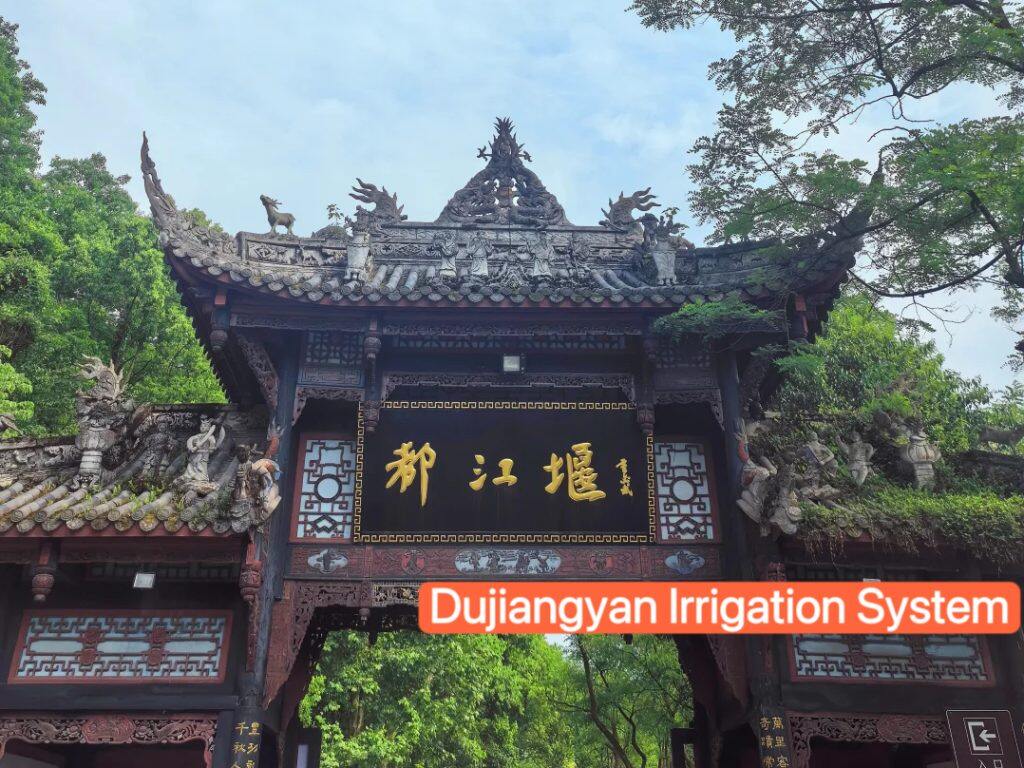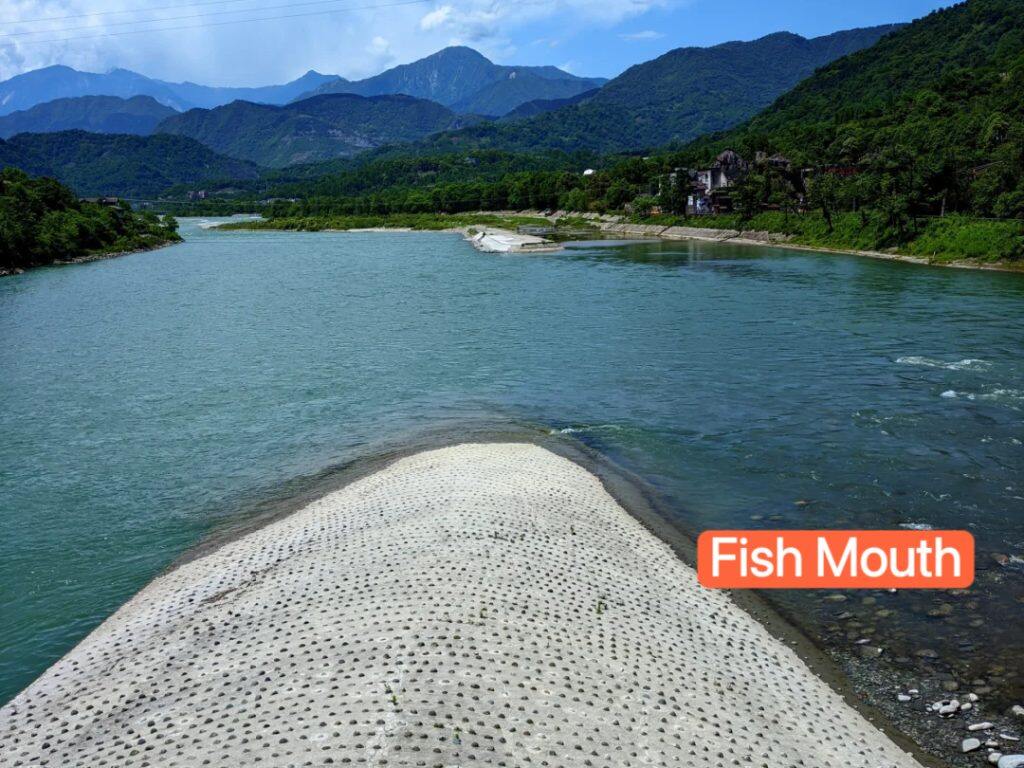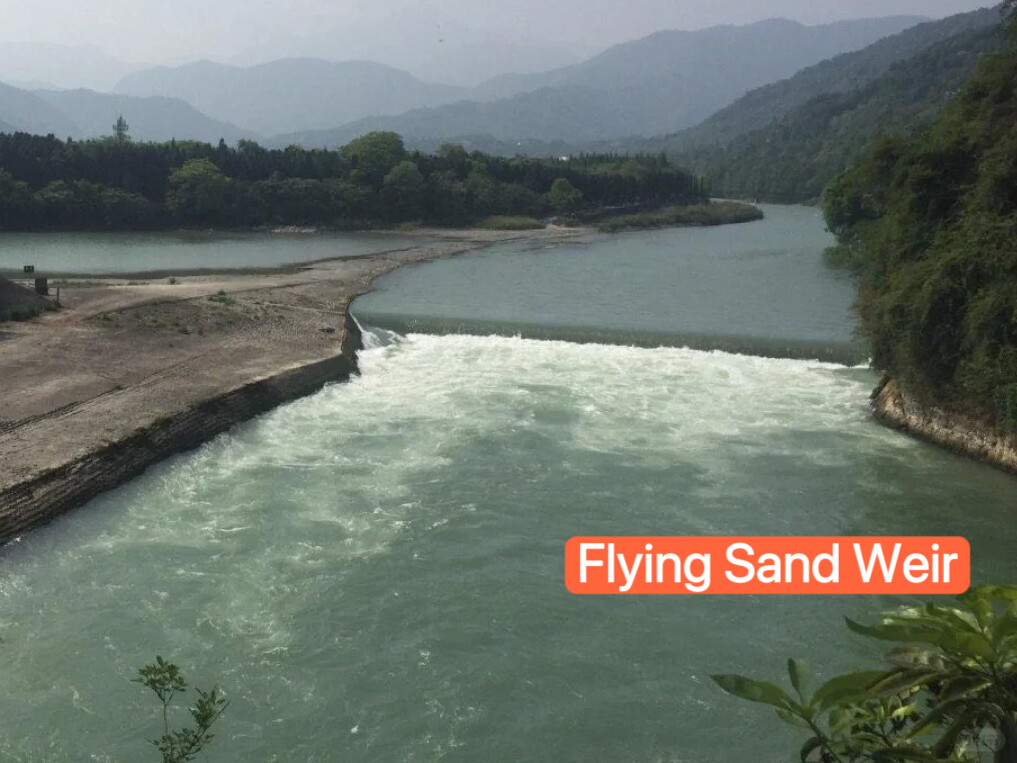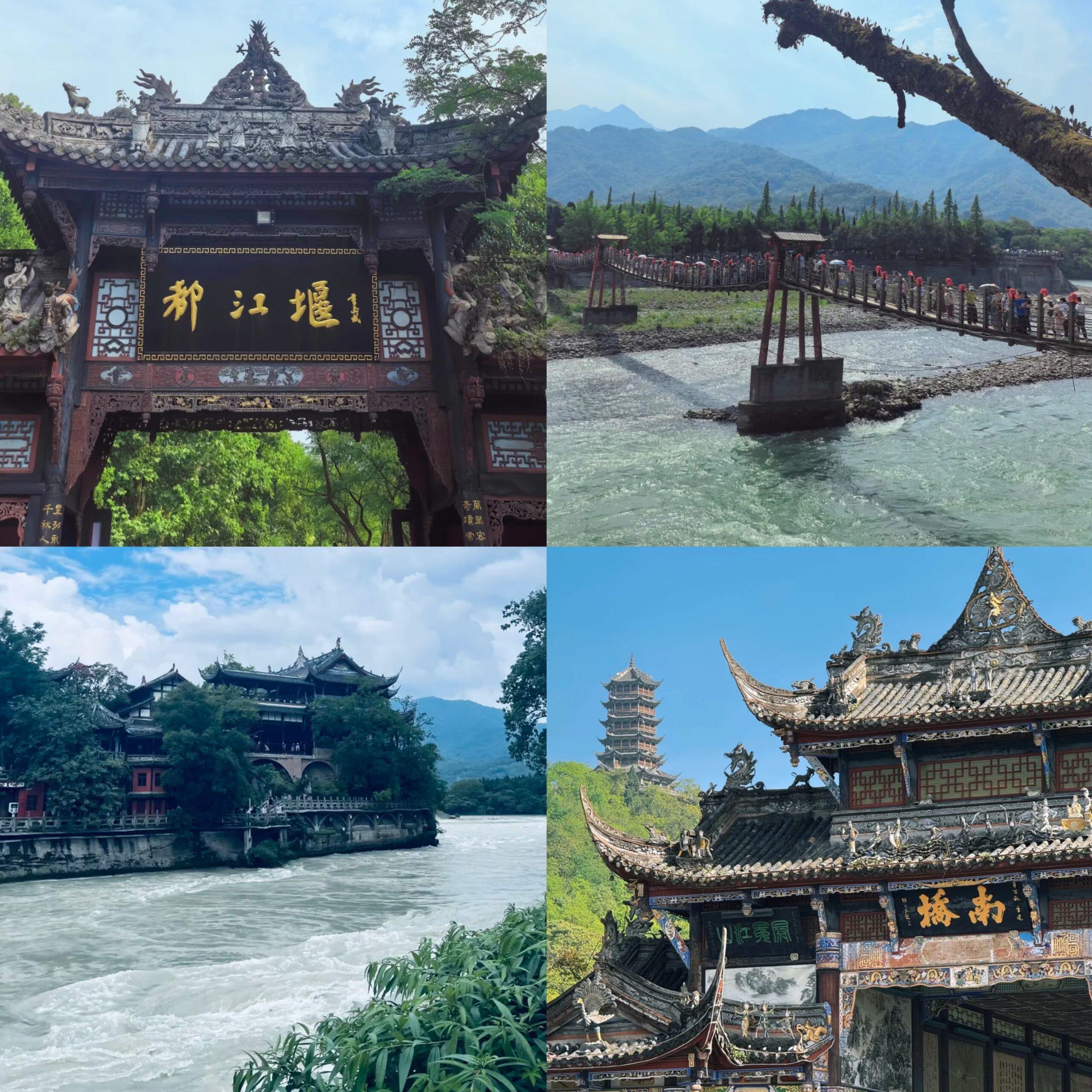Hello, I’m Mike Wang, a China travel expert with over 20 years of experience. During these two decades, I’ve traveled extensively around the world. This guide walks you through Dujiangyan in China—the world’s oldest working damless water system. I’ll share its long history, lovely river scenery, and useful travel tips to help you plan a great trip.
Introduction
Dujiangyan, in Dujiangyan City (1 hour by car from Chengdu) in China, is the world’s oldest working damless irrigation project—covering about 1,000 acres. Built over 2,250 years ago (256 BC) by engineer Li Bing and his son, it’s a marvel of ancient Chinese wisdom.
It uses the local terrain (high in the northwest, low in the southeast) and mountain outlet water flow to divert water smoothly and regulate irrigation automatically. The system combines embankments, water distribution, flood discharge, and sediment control—still providing flood prevention, irrigation, and water supply for the area today.
With lush river views and historic spots like the Anlan Cable Bridge, Dujiangyan isn’t just an engineering site; it’s a place to see how ancient China’s innovation still benefits society, making it a top visit in Sichuan.

Tickets & Opening Hours
- Opening Hours:
- March 1 – November 14: 8:00 AM – 6:00 PM
- November 15 – February 28: 8:00 AM – 5:30 PM
- Ticket Prices:
- Adult: CNY 80 (approx. $11 USD)
- Student (with valid ID): CNY 40 (approx. $5.5 USD)
- Free Entry: Children under 1.2m or 6 years old, seniors over 65, and disabled visitors1. Seniors aged 60-64 may receive free entry on non-national holidays.
- Note: Prices may vary slightly between peak (Apr-Oct) and off-peak (Nov-Mar) seasons.
- Purchasing Tickets:
- On-site: Buy at ticket windows near the entrance (cash and major credit cards accepted, but having CNY is advised).
- Online: Purchase through official WeChat accounts (e.g., “悦游都江堰”) or platforms like Ctrip or Dahepiao. You can pay using Alipay, WeChat Pay, or international credit cards. Online booking is recommended during holidays.
- Combo Tickets: A combo ticket for Dujiangyan and the nearby Mount Qingcheng is available for around CNY 150 (approx. $21 USD).
Main Scenic Areas & Attractions
The core area of Dujiangyan is vast, focusing on the ancient irrigation system and surrounding temples.5 Key attractions include:
Yuzui (Fish Mouth) :
This is a division levee built in the middle of the Minjiang River, shaped like a fish mouth. It smartly divides the river into Inner River (for irrigation) and Outer River (for flood discharge). It’s a masterpiece of ancient hydraulic engineering.

Feishayan (Flying Sand Weir) :
This is an overflow weir. It serves three main functions: diverting floodwater, draining sediment from the Inner River, and regulating water flow into the Inner River. It works in harmony with Yuzui and Baopingkou.

Baopingkou (Precious Bottle Neck) :
This is the water intake channel cut through Mount Yulei. It controls the amount of water entering the irrigation system for the Chengdu Plains, just like a bottleneck. Its construction was an incredible feat in the Qin Dynasty.
Anlan Bridge (Husband-Wife Bridge) :
This ancient suspension bridge crosses the Minjiang River, connecting the two banks. It offers fantastic views of the entire irrigation system. The current bridge is a reinforced reconstruction.
Erwang Temple (Two Kings Temple) :
This temple, built against the mountain, is dedicated to Li Bing and his son, the masterminds behind Dujiangyan. It was initially built during the Northern and Southern Dynasties and is a place where people commemorate their contributions. The temple contains statues, historical inscriptions, and offers panoramic views.
Transportation
🚄By High-Speed Train (Recommended):
Take Chengdu Metro Line 2 to Xipu Station, transfer to a high-speed train to Dujiangyan Station or Lidui Park Station (closer to the scenic area). The train ride takes about 30 minutes and costs around CNY 10-15 (approx. $1.5-$2 USD).
🚌By Bus:
Buses to Dujiangyan run from Chadianzi Bus Station in Chengdu. The journey takes about 1.5 hours and costs approximately CNY 20-30 (approx. $3-$4 USD).
🚕By Car/Taxi:
Driving from downtown Chengdu takes about 1 hour via the Chengdu-Guanxian Expressway. Taxis or ride-hailing apps like Didi are convenient but more expensive. Parking is available at the scenic area (approx. CNY 10-20/day).
Experiences & Activities
Guided Tours:
Hiring a local guide (approx. CNY 100-200 per group) or renting an audio guide (approx. CNY 20) at the entrance is highly recommended to truly understand the engineering principles and history.
Qingcheng Mountain Day Trip:
Most visitors combine Dujiangyan with a trip to nearby Mount Qingcheng (前山), a famous Taoist mountain. A combo ticket is available.
Panda Valley Visit:
You can see giant pandas at the Dujiangyan Panda Base (approx. 30 mins drive, ticket ~CNY 58).
Nanqiao Bridge Night View:
Enjoy the beautiful light displays and lively atmosphere at Nanqiao Bridge in the evening, located near the old town.
Special Event – Water Releasing Festival:
If you visit around the Qingming Festival (early April, check exact dates for 2025), you might witness the traditional Water Releasing Festival. This event often requires advanced online reservation (usually via the official WeChat account “悦游都江堰”) due to limited space.
Practical Tips & Etiquette
- Best Time to Visit: Spring (March-May) and Autumn (September-November) offer the most pleasant weather.
- What to Wear: Wear comfortable walking shoes as there’s extensive walking and climbing involved. Bring rain gear as the climate is humid.
- What to Bring: Carry water and snacks, as prices inside can be higher. Sun protection (hat, sunscreen) is recommended in summer.
- Etiquette:
- Do not climb on or damage cultural relics and historic buildings.
- Be respectful and keep your voice down, especially in temples like Erwang Temple.
- Do not litter. Help keep the world heritage site clean.
- Follow all safety instructions, especially when crossing the Anlan Bridge or near water.
Food
Local Specialties:
Try Yingzhao Mian (Chickpea Noodles), Jiangtuan Fish (steamed or braised), and various Sichuan cold dishes.
Snacks:
Don’t miss Congcong Rolls (spring onion pancakes) and Zhang Laozao (sweet fermented rice with glutinous rice balls).
Where to Eat:
- Old Town Streets (Guanxian Ancient City): Find numerous small eateries and street food stalls near the scenic area.
- Nanqiao Bridge Area: Offers a variety of restaurants and a vibrant atmosphere in the evening.
- Restaurant Suggestion: Yi Cai Yi Wei (一菜一味) on Dujiangyan Avenue offers a mix of local Sichuan dishes. A meal averages around CNY 50-80 per person.

Mike Wang
Mike Wang is a 40-something Chinese travel expert, has explored the world,
hosting numerous foreign visitors. He’s deeply interested in and knowledgeable
about ancient cultural architectures, enriching journeys with his insights.

